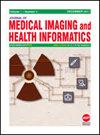Recurrent Neural Network Deep Learning Techniques for Brain Tumor Segmentation and Classification of Magnetic Resonance Imaging Images
引用次数: 0
Abstract
Brain Tumour is a one of the most threatful disease in the world. It reduces the life span of human beings. Computer vision is advantageous for human health research because it eliminates the need for human judgement to get accurate data. The most reliable and secure imaging techniques for magnetic resonance imaging are CT scans, X-rays, and MRI scans (MRI). MRI can locate tiny objects. The focus of our paper will be the many techniques for detecting brain cancer using brain MRI. Early detection of tumour and diagnosis is might essential to radiologist to initiate better treatment. MRI is a competent and speedy method of examining a brain tumour. Resonance in Magnetic Fields Imaging technology is a non-invasive technique that aids in the segmentation of brain tumour images. Deep learning algorithm delivers good outcomes in terms of reducing time consumption and precise tumour diagnosis (solution). This research proposed that a Convolutional Neural Network (CNN) and Recurrent Neural Network (RNN) Supervised Deep Learning model be used to automatically find and split brain tumours. The RNN Model outperforms the CNN Model by 98.91 percentage. These models categorize brain images as normal or pathological, and their performance was evaluated.脑肿瘤磁共振成像图像分割与分类的递归神经网络深度学习技术
脑瘤是世界上最具威胁性的疾病之一。它缩短了人类的寿命。计算机视觉对人类健康研究是有利的,因为它不需要人类判断来获得准确的数据。磁共振成像最可靠、最安全的成像技术是CT扫描、x射线和核磁共振扫描(MRI)。核磁共振成像可以定位微小物体。本文的重点将是利用脑MRI检测脑癌的许多技术。早期发现肿瘤和诊断可能是必不可少的放射科医生开始更好的治疗。核磁共振成像是一种有效而快速的脑肿瘤检查方法。磁共振磁场成像技术是一种非侵入性的技术,有助于分割脑肿瘤图像。深度学习算法在减少时间消耗和精确肿瘤诊断(解决方案)方面取得了良好的效果。本研究提出使用卷积神经网络(CNN)和循环神经网络(RNN)监督深度学习模型自动发现和分割脑肿瘤。RNN模型的性能比CNN模型高出98.91%。这些模型将大脑图像分类为正常或病理,并对其性能进行评估。
本文章由计算机程序翻译,如有差异,请以英文原文为准。
求助全文
约1分钟内获得全文
求助全文
来源期刊

Journal of Medical Imaging and Health Informatics
MATHEMATICAL & COMPUTATIONAL BIOLOGY-RADIOLOGY, NUCLEAR MEDICINE & MEDICAL IMAGING
自引率
0.00%
发文量
0
审稿时长
6-12 weeks
期刊介绍:
Journal of Medical Imaging and Health Informatics (JMIHI) is a medium to disseminate novel experimental and theoretical research results in the field of biomedicine, biology, clinical, rehabilitation engineering, medical image processing, bio-computing, D2H2, and other health related areas. As an example, the Distributed Diagnosis and Home Healthcare (D2H2) aims to improve the quality of patient care and patient wellness by transforming the delivery of healthcare from a central, hospital-based system to one that is more distributed and home-based. Different medical imaging modalities used for extraction of information from MRI, CT, ultrasound, X-ray, thermal, molecular and fusion of its techniques is the focus of this journal.
 求助内容:
求助内容: 应助结果提醒方式:
应助结果提醒方式:


